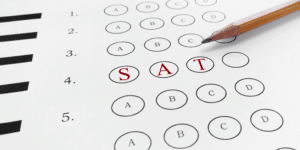Here are some common mistakes to avoid in your MBA application, culled from the combined experiences of the expert former MBA admissions directors at Fortuna Admissions.
Make no mistake, an MBA Admissions Director has sharp instincts for discerning your confidence, commitment, or any hint of discrepancy across your business school application. Whether you’re putting the final polish on your MBA application, or just exploring the process, I want to bring your attention to some of the most common mistakes my colleagues and I have seen as former MBA admission directors and business school insiders. Many of these mistakes are easy to make, especially working under tight application deadlines amid the demands of your full-time job.
Here are eight top tips, culled from my Fortuna Admissions colleagues, on the most common mistakes to avoid in your MBA application:
Mistake #1 – Waiting until the 11th hour to work on your application
It’s obvious to any seasoned admissions reviewer when someone waited until the 11th hour to complete the application. Telltale signs are sloppy typos, poorly organized essays, and even unfortunate mentions of why you want to attend another school (note – while we’d never endorse the copy-paste method of submitting applications, mastery of find-and-replace is essential). Create a week-by-week schedule for yourself, and set achievable deadlines to stay motivated and on pace. One of the most time-consuming elements of the application process are your essays, so it’s vital to invest time upfront to reflect before you sit down to write. Remember, you wouldn’t prepare for a marathon by starting to train the week before, and the same goes for your b-school applications. Pace yourself, and start early.
Mistake #2 – Wasting valuable real estate with unnecessary repetition
Like your excellence-oriented peers in the applicant pool, you undoubtedly have a number of professional distinctions you’re eager to convey to the admissions committees. However, avoid trying to weave a roster of achievements into your essays, especially if they’re already chronicled in your CV. The person reviewing your application will have both on hand, so be strategic about how you build your narrative across each element of your application. Think consistency, not repetition. For example, your essay might hone in on one or two points in greater depth to underscore or explain examples that surface in your CV. Ensure each piece of your application comes together to build a compelling portrait of why you are. And when it comes to your essays, think depth versus breadth.
Mistake #3 – Not fully answering the essay questions
After the first draft of your essays, ask yourself if you’ve stayed on course by answering the heart of the question being asked. Particularly for essays with multiple questions, make sure that you address everything that’s being asked. It’s not enough to answer just part of the question, an all-too-common mistake applicants make. Let’s take the Dartmouth Tuck question, for example, which asks about your goals, why an MBA is a critical next step, and, specifically, why Tuck. Make sure that you articulate what knowledge or skills you’ll gain from a Tuck MBA to help you achieve both your short-term and long-term goals.
Mistake #4 – Not tailoring your application for the program
It’s critical that you focus on each school application individually and make sure to tailor each one appropriately. It’s obvious when an applicant has written an essay for another school, especially when the language becomes vague and non-specific. (Once you’ve nailed your story it’s tempting to cut-and-paste, but don’t do it). Admissions directors are often evaluating your level of fit and enthusiasm for their school, so it’s essential to support your candidacy with a solid understanding of a school’s unique identity and offerings. Speaking to alumni and current students from each school allows you to gain these (and more) invaluable insights. It’s not enough to proclaim your interest in the program, and don’t presume top grades, GMAT scores and an impressive job will win you acceptance. You need to convey your enthusiasm and interest in a manner that’s both thoughtful and sincere.
Mistake #5 – Choosing the wrong recommenders
It might seem impressive to have a recommendation letter from a company CEO or other C-suite executive, and it’s true that seniority carries weight. But it’s more important that you choose someone who knows you well and can offer very detailed examples of your skills, performance, and contributions. We often read letters of recommendation written by a senior level executive who, alas, barely knew the applicant, or whose limited experience working together offered little of substance to the candidate’s application. Admissions wants to get to know you on a deeper level, so think about individuals who can best attest to your character, your skill set, and your achievements.
Mistake #6 – Not allowing your recommenders sufficient time
We advise that you give your recommenders at least six weeks’ notice before the application deadline to complete your letters of endorsement. They are likely busy people who will appreciate having ample time to consider what to write on your behalf. Speak to them in person or by phone, and offer some key points and distinctions to remind them of some of your accomplishments. A common mistake is for applicants to neglect this important step until too close to the deadline, especially for Round 2 deadlines, which fall right after Christmas and the New Year, when many people are on vacation. Don’t make your poor planning your recommenders’ holiday headache.
Mistake #7 – Poor etiquette in correspondence with the school or on a campus visit
Not to overstate the obvious, but any communication you have with a program should be professional and positive. My Fortuna colleagues have shared prior experiences about candidates who made negative comments about the school to current students they met on campus or made a poor impression with school staff (not necessarily in admissions). Keep in mind that many business schools are tight-knit, so anything you say to a member of the community might easily be relayed to admissions.
Mistake #8 – Careless mistakes or typos in your application
An application with careless errors can make an admissions director question how serious you are about the program. Remember that the quality of your application reflects your professionalism and attention to detail, so make sure that your application is free of typos or sloppy mistakes. Spend the time to ensure your application is well-written and polished. Beyond giving yourself enough time to offer your best work, find someone else to give it a final pass before you hit “send.”
I recently published an article highlighting insights on this topic from current deans and admission directors from top MBA programs – including Stanford GSB, Berkeley Haas, INSEAD, Kellogg, Booth and IMD – gleaned from the panel discussions I moderated during the 2017 CentreCourt MBA Festival. View the full article to read more perspectives and advice.
Author: Matt Symonds is a co-founder and director at MBA admissions coaching firm Fortuna Admissions, a dream team of former admissions directors and business school insiders from 12 of the top 15 business schools.




